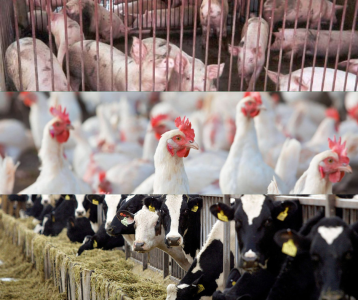A landmark law aimed at transforming the Philippine livestock, poultry, and dairy sectors is set to take effect this October. Republic Act 12308, or the Animal Industry Development and Competitiveness Act (AIDCA), was signed into law on September 25. It commits roughly USD 3.45 billion over the next decade to modernize animal agriculture and strengthen national food security.
Agriculture Secretary Francisco Tiu Laurel Jr called the law a “bold commitment to the people who feed our country.” He emphasized that AIDCA is more than a funding mechanism—it’s a strategic move to attract investments, raise farmer incomes, and generate jobs.
The law takes effect by mid-October, coinciding with World Food Day on October 16.
“The future development of these sectors will not only enhance food security, but also attract new investments, improve farmer incomes, and generate more jobs,” Mr Laurel said.
Stronger institutions, safer herds
AIDCA strengthens key government agencies that support animal agriculture. It upgrades the Bureau of Animal Industry (BAI) into a line agency of the Department of Agriculture (DA). This gives BAI more authority to regulate the sector, manage disease outbreaks, and lead herd repopulation.
BAI will have two main divisions:
- ➡️ Animal Development and Welfare Office (ADWO) – This office will handle developmental programs, including those previously managed by the National Livestock Program, which will be absorbed by BAI.
- ➡️ Animal Regulation and Enforcement Office (AREO) – This will serve as the core regulatory arm of BAI, taking over and strengthening the functions of the National Meat Inspection Service.
The new law aims to build local capacity to respond to major animal health threats such as African Swine Fever (ASF), avian influenza (AI), and Newcastle Disease. By investing in domestic vaccine production and biosecurity protocols, the Philippines hopes to reduce its reliance on foreign supplies and improve its resilience against outbreaks.
Funding growth and infrastructure
A key feature of the law is the Animal Competitiveness Enhancement Fund (AnCEF), which will receive around USD 345 million yearly from tariffs on imported meat and dairy. Of this amount, 26% will support herd repopulation and build-up—70% for swine, 20% for poultry, and 5% each for native breeds and other animals.
Beyond herd repopulation, the new law has additional allocations:
- ➡️ USD 20.7 million for promoting animal health and disease prevention,
- ➡️ USD 31 million to help producers recover from biosecurity threats like ASF and AI,
- ➡️ USD 120.75 million to upgrade postharvest infrastructure, including slaughterhouses and cold storage facilities,
- ➡️ Support for feed development to improve nutrition and reduce import dependence, and
- ➡️ Expanded access to affordable credit to help producers invest in growth and recovery.
If tariff collections exceed USD 345 million in any year, the surplus will be used to support farmer recovery and compensation. For producers across the animal protein industry, AIDCA represents a long-awaited move toward strategic investment, institutional reform, and sector-wide resilience.
Mr Laurel noted that the law “marks a turning point for Philippine agriculture and empowers farmers, protects consumers and prepares our food systems for the future.”

